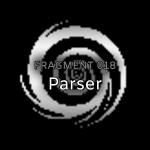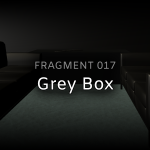March, 2024
now browsing by month
Parser

In the evolving tapestry of video games, the intersection of gaming and coding has unveiled a unique niche where creativity meets logic. The 18th fragment, “Parser,” serves as a tribute to this fascinating confluence, offering players a minimalist graphics engine within Unity to manipulate a 64×64 grid through a custom scripting language.
This concept of minimalist engines and in-game programming isn’t new but stands on the shoulders of giants in the gaming world. Minecraft’s introduction of redstone was revolutionary, transforming the game into a sandbox not just of physical construction but of electrical engineering. Redstone allows players to build intricate logic circuits, culminating in the creation of functional computers within the game itself. This feature exemplifies how minimalist elements can foster an environment ripe for learning and innovation, demonstrating the principles of logic and computing in a tactile, engaging manner.
John Conway’s Game of Life, a cellular automaton, is another landmark in minimalist design sparking complex outcomes. With simple rules affecting the state of cells on a grid, it creates patterns that evolve in surprisingly complex ways. The Game of Life teaches players about the emergence and the unpredictable beauty found in simplicity, inspiring countless individuals to experiment with the concept of cellular automation.
Space Engineers expands on the theme of in-game programming by allowing players to script computers that control various aspects of their spacecraft and bases. This not only adds depth to the gameplay but also introduces players to the practical applications and challenges of programming in an immersive, interstellar setting. It’s a brilliant fusion of game design and coding education, wrapped in the engaging context of space exploration.
Beyond these examples, numerous other games have incorporated programming elements as a core part of the gameplay. Titles like “Robocode,” “Screeps,” and “Human Resource Machine” challenge players to use code to solve puzzles or battle other players’ creations. These games transform abstract coding concepts into tangible, interactive experiences, making learning both accessible and fun.
“Parser” is a continuation of this rich tradition, simplifying the concept to its essence—a minimalist graphics engine and a 64×64 grid. It encourages players to engage directly with the logic and creativity of coding, stripped of any distractions. Like its predecessors, “Parser” is more than a game; it’s an educational tool, a creative outlet, and a testament to the power of minimalist design to foster deep engagement and learning.
Grey Box

Stripping away the layers of graphic detail that define modern gaming, this fragment challenges players to navigate a space devoid of visual cues, armed only with indicators of their position, rotation, and the identity of objects beneath their cursor.
“Grey Box” operates on the principle of implied presence, a concept where the essence of an environment is suggested rather than explicitly depicted. The soul of a space—its atmosphere, emotion, and narrative potential—can be conveyed through minimalistic means, and demonstrates how the absence of visuals can, paradoxically, make the environment more vivid in the player’s imagination.
Environmental storytelling is the art of imbuing spaces with narrative significance without relying on direct exposition.
Creating an environment in the absence of visual detail requires a deep understanding of the other elements that make spaces meaningful. Sound, texture (conveyed through descriptions), and spatial design become paramount. “Grey Box” challenges game designers to think beyond the visual, to consider how spaces feel, how they sound, and how they are navigated. It’s an exercise in using constraint as a creative tool, focusing on the core elements that make environments immersive and engaging.
